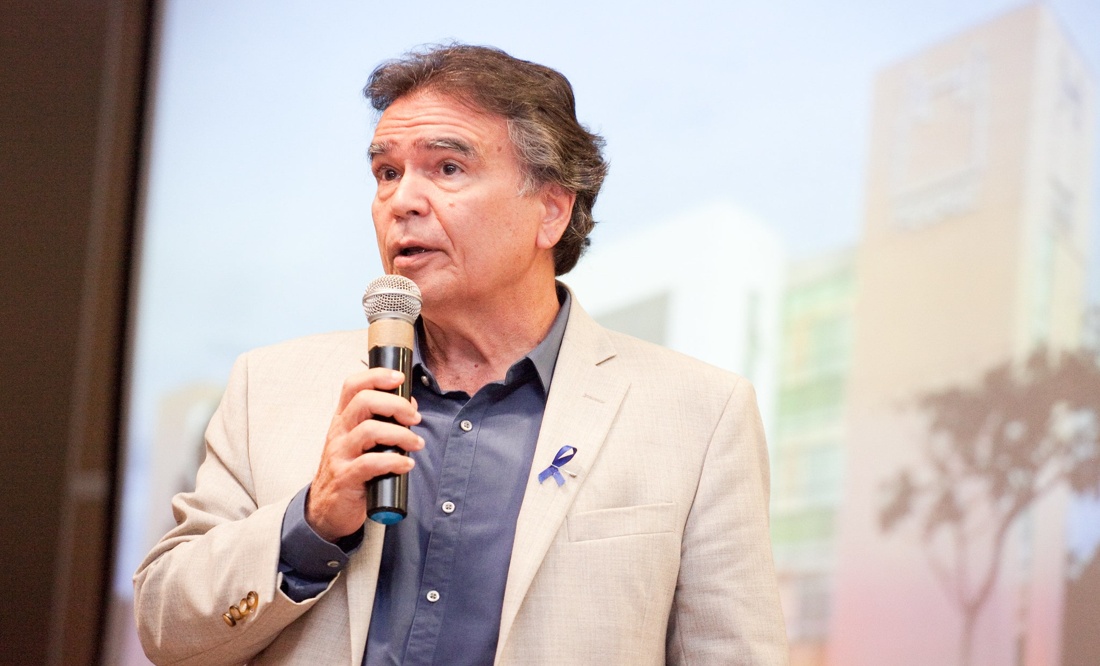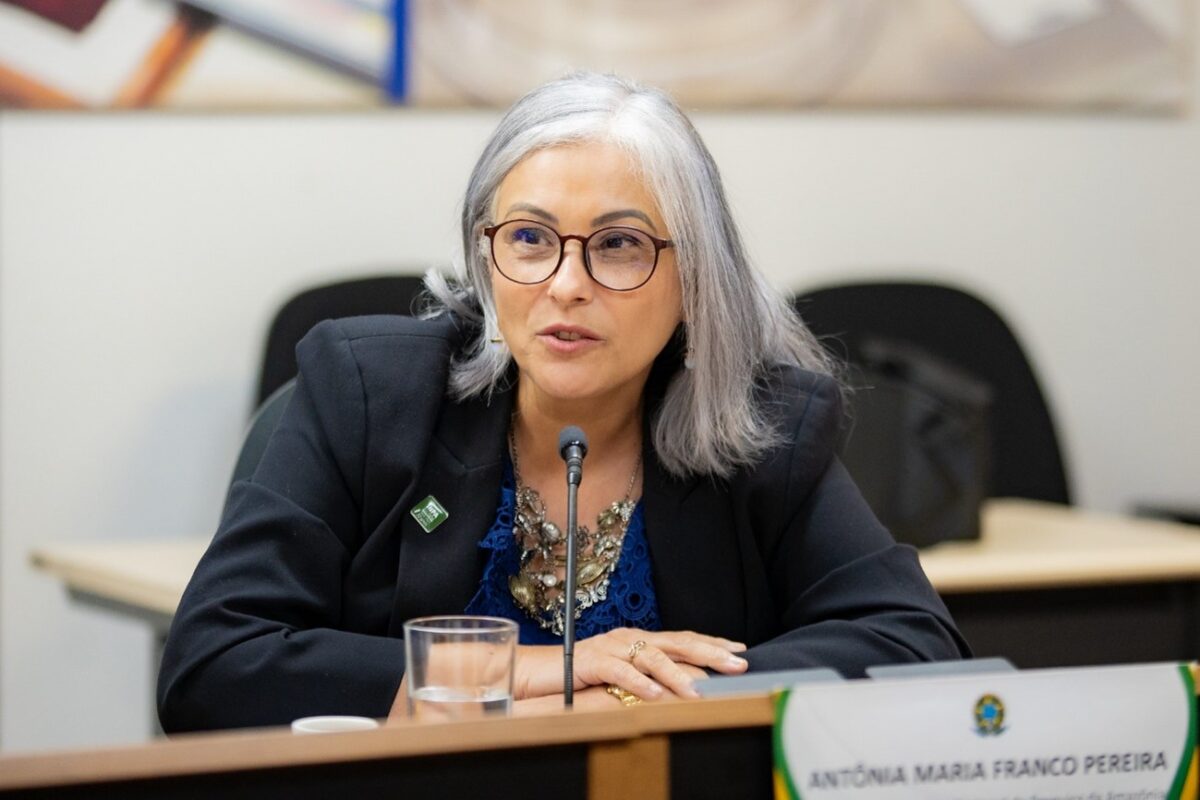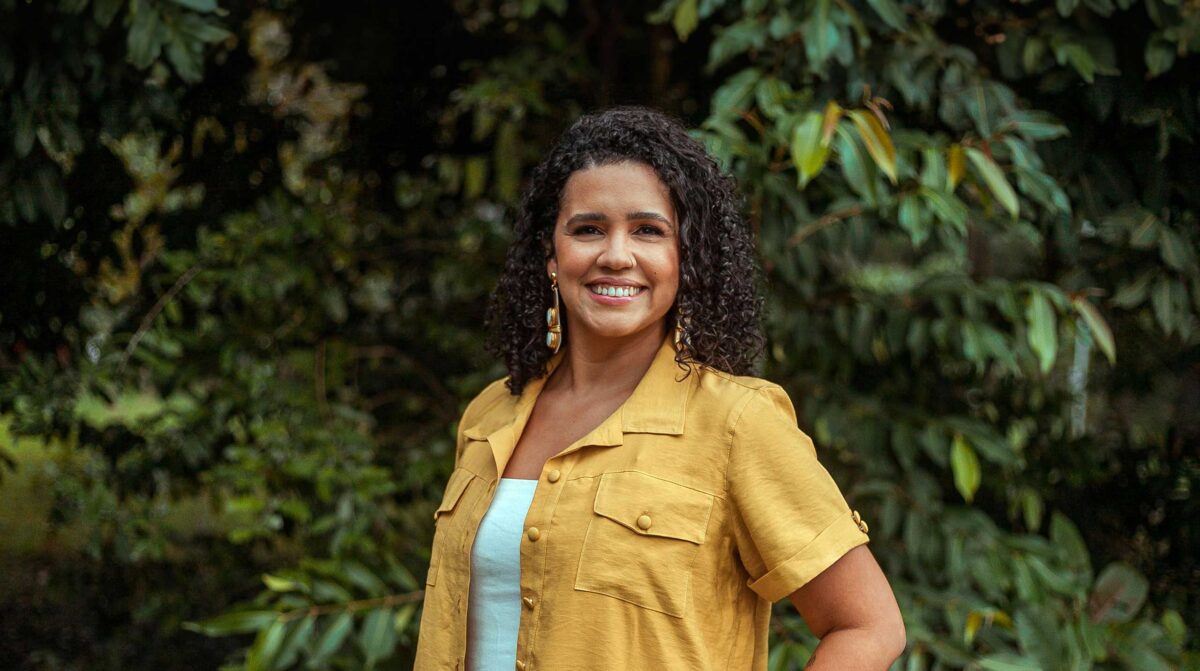 #Interviews
#Interviews
Climate disasters fuel the spread of tropical diseases
Disasters like the tragic incident in Rio Grande do Sul and the savannization of the Amazon also have epidemiological impacts, explains Antonia Pereira, of the National Institute of Amazonian Research (INPA)
 Antonia Pereira, an INPA researcher: “If we fail to care for our cities and those who live in them, we will experience more incidents like those of Rio Grande do Sul” Image: Rodrigo Cabral/ASCOM-MCTI
Antonia Pereira, an INPA researcher: “If we fail to care for our cities and those who live in them, we will experience more incidents like those of Rio Grande do Sul” Image: Rodrigo Cabral/ASCOM-MCTI
In the fictional film Don’t Look Up (2021), the scientific community warned of a meteorite capable of destroying Earth but was disregarded. In real-life Brazil, there have been warnings about the impact of human actions on the environment, including the savannization of the Amazon caused by deforestation.
These very warnings have been ignored and have led to extreme events, such as the tragedy that devastated residents of Rio Grande do Sul.
In an interview with Science Arena, biologist Antonia Maria Ramos Franco Pereira, who has a PhD in cellular and molecular biology, discusses the risk of climate change leading to future epidemics.
“When you change the environment, you also change the temperature and the winds, the humidity, the soil, and much more, including diseases transmitted by insects,” explains Pereira, a researcher at the National Institute of Amazonian Research (INPA), an organization she directed from 2018 to 2023. She was the first woman to direct the INPA in more than 70 years since the institution was founded.
During the interview, Pereira also commented on the challenges of being a female researcher and institution director in the Amazon region.
Science Arena – How does climate change lead to extreme events, such as the incident in Rio Grande do Sul?
Antonia Pereira – The scientific community—including us at INPA, through the Large-Scale Biosphere-Atmosphere Experiment in Amazonia (LBA) and Amazon-Face—has already been indicating that these changes would occur, including the savannization of the Amazon region. The disasters caused by heavy rainfall and rising temperatures also have a lot to do with urban infrastructure.
Amazon-Face is a long-term scientific research project conducted in partnership with the University of Campinas (UNICAMP) and the UK government. It seeks to provide answers to a major uncertainty regarding the future of the Amazon: understanding how the increase in atmospheric carbon dioxide (CO2) impacts the rainforest, biodiversity, and so-called ecosystem services.
Brazil has experienced other extreme weather events in recent years, including the drought in the North region. How do such events affect the epidemiology of tropical diseases?
When you change the environment, you also change the temperature and the winds, the humidity, the soil, and much more, including diseases transmitted by insects. There is a risk that various pathogens and insect vectors themselves will adapt to the new environmental conditions.
Some may be unable to survive and will be eliminated. But some adapt and could lead to extreme conditions with regard to the incidence of diseases, including the emergence of new epidemics.
When deforestation occurs, the hosts, as well as their vectors, may leave their local environment and head to urban environments. This leads to an increase in the prevalence of certain diseases, in different regions of the country.
Due to the flooding in hundreds of cities in Rio Grande do Sul, there has been a huge jump in cases of diarrhea, hepatitis A, dengue fever, and leptospirosis. With the current situation, what are the most potentially effective health measures?
In cases of flooding, such as what we have seen in Rio Grande do Sul, contaminants result from the presence of microorganisms and bacteria. Leptospirosis is caused by a bacteria found in urine from rats and other animals. Action in the midst of disaster is complicated. Residents need medication and emergency treatment. Precautions involve avoiding contamination by sewage.
Sanitation measures are needed, with a focus on host animals, which are the sources of infection. In addition to leptospirosis, residents are at risk of cholera and severe diarrhea. We must examine people and diagnose cases in these regions. We need ongoing actions that are not merely palliative, as we often see in emergencies.
At the Leishmaniasis and Chagas Disease Laboratory (LLDC), under your coordination at the INPA, what progress has been made in understanding parasitic diseases in order to characterize and define the different types of illnesses?
The laboratory has a history of eco-epidemiological studies, focused on geographical distribution and diversity, as the Amazon provides our country with an enormous biodiversity of species, vectors, and pathogens.
Leishmaniasis, especially in the state of Amazonas, presents as tegumentary [causing ulcers on the mucus membranes and skin]. In Santarém, in the state of Pará, the disease is visceral [affecting the internal organs, such as the liver, spleen, and bone marrow], which can lead to death.
How is your laboratory using new approaches to diagnose and treat Leishmaniasis and other diseases based on in vitro studies or clinical research?
We are focusing on diagnosis, isolation, biochemical and molecular characterization of the pathogens, and the infection process of the vectors. In the laboratory, we study the pathogen’s resistance to drugs, such as Glucantime, which is offered by Brazil’s Unified Health System (SUS) to treat tegumentary leishmaniasis.
People who live on secondary roads [perpendicular to Amazonian highways] have difficulty even accessing transportation to Basic Healthcare Units (UBS). Can you imagine going to a UBS to get an intramuscular injection or to receive intravenous treatment daily?
With the aim of developing a topical treatment (a cream or ointment), we have been studying, since 2003, the use of natural products. We have tested many plant samples. We work with nanoparticles, because if the disease affects the skin, it is important that the treatment can pass through the skin and reach the parasite, which is located in the dermal region.
We have discovered a natural product from a plant found in the North and Northeast regions of Brazil, with anti-inflammatory properties. We already have the patent. We fractionated the material and isolated substances. From twenty substances, we found that two performed very well.
In animal models, the results were also effective. We are now advancing to a phase 1 clinical trial, in which we will evaluate how to make the microemulsion and observe whether it causes dermal and allergic reactions in healthy people, who have never come into contact with the pathogen.
The plan is to create a startup, with the intention of helping the substance reach a 4 or 5 technological readiness level (TRL).
When it comes to neglected tropical diseases, actions are often palliative. Which social determinants should we pay more attention to? What needs to be done to prevent outbreaks and epidemics?
As professor [Carlos Medicis] Morel [doctor, biophysicist, researcher, and member of the Brazilian Academy of Sciences] says, when we talk about neglected tropical diseases, we are actually dealing with people who are neglected. People on the lower end when it comes to quality of life, in terms of health infrastructure and housing.
When I was teaching, I always talked about children with ringworm who didn’t have shoes. Because they didn’t have shoes, they would wear plastic bags on their feet, so they didn’t touch the soil. Especially in the North, where we have a lack of filtered water and open sewer systems.
People need a better quality of life in terms of their environment and food. If we fail to care for our cities and those who live in them, we will experience more incidents like those of Rio Grande do Sul.
What were the consequences, in Brazil, of experiencing a pandemic while the federal government promoted environmental destruction and attacks on science, as well as the dissemination of fake news about vaccines and other health issues?
Many countries were generally unprepared for a pandemic. In terms of science, vaccine production was possible due to advanced prior knowledge and production. I don’t really like to discuss politics. I don’t pick sides. I’m a neutral person. So, it’s not up to me to judge one or the other. Ultimately, some people found it difficult to believe in science, mainly the vaccine.
In general, people still do not know how an immunization is produced. The media needs to show how a vaccine is made, how it affects the body, and how it prevents diseases. People need to think, be careful, and potentially use social media in a more educational, objective, and helpful way, without making things too complicated.
During the pandemic, all eyes were on COVID-19 and this affected the epidemiological control of other diseases. Was this an additional challenge for you, as the first woman to direct the INPA?
Being a woman in charge of the INPA, which has only been run by men for over 70 years, has certainly been challenging. And I like challenges. I had already been approved for a grant from the Coordination for the Improvement of Higher Education (CAPES) to go to Washington, in the United States, to participate in a year-long postdoctoral fellowship. However, I decided to take on the challenge of managing the INPA. Firstly, because no woman had ever gone through the selection process for this role at INPA.
And, to a certain extent, in a region like the Amazon, as well as the entire North region of Brazil, a woman’s presence is always challenging in high-ranking positions.
I am from Rio de Janeiro and I have become an Amazonian. I love this land. This land that so desperately needs development, growth, improvements, and particular care for the Indigenous and riverside communities. We can’t always do everything we want, because we butt up against legislation and bureaucracy.
Scientists also have their challenges, because they disagree with each other, which is healthy. Disagreement brings with it new opportunities. Even with shifting budgets in Science and Technology, the exchanges I have had with ministers Marcos Pontes, Paulo Alvim, and, more recently, Luciana Santos have been positive. I have nothing critical to say about any of them. And, in face of all the challenges, I would like to say that I had an excellent team of colleagues and support from my husband and family. I am grateful for each and every one of them. And I can’t forget my friends and the LLDC team at the INPA, which I direct, and who have held the line when I was away on institutional management duties.
*
This article may be republished online under the CC-BY-NC-ND Creative Commons license.
The text must not be edited and the author(s) and source (Science Arena) must be credited.


